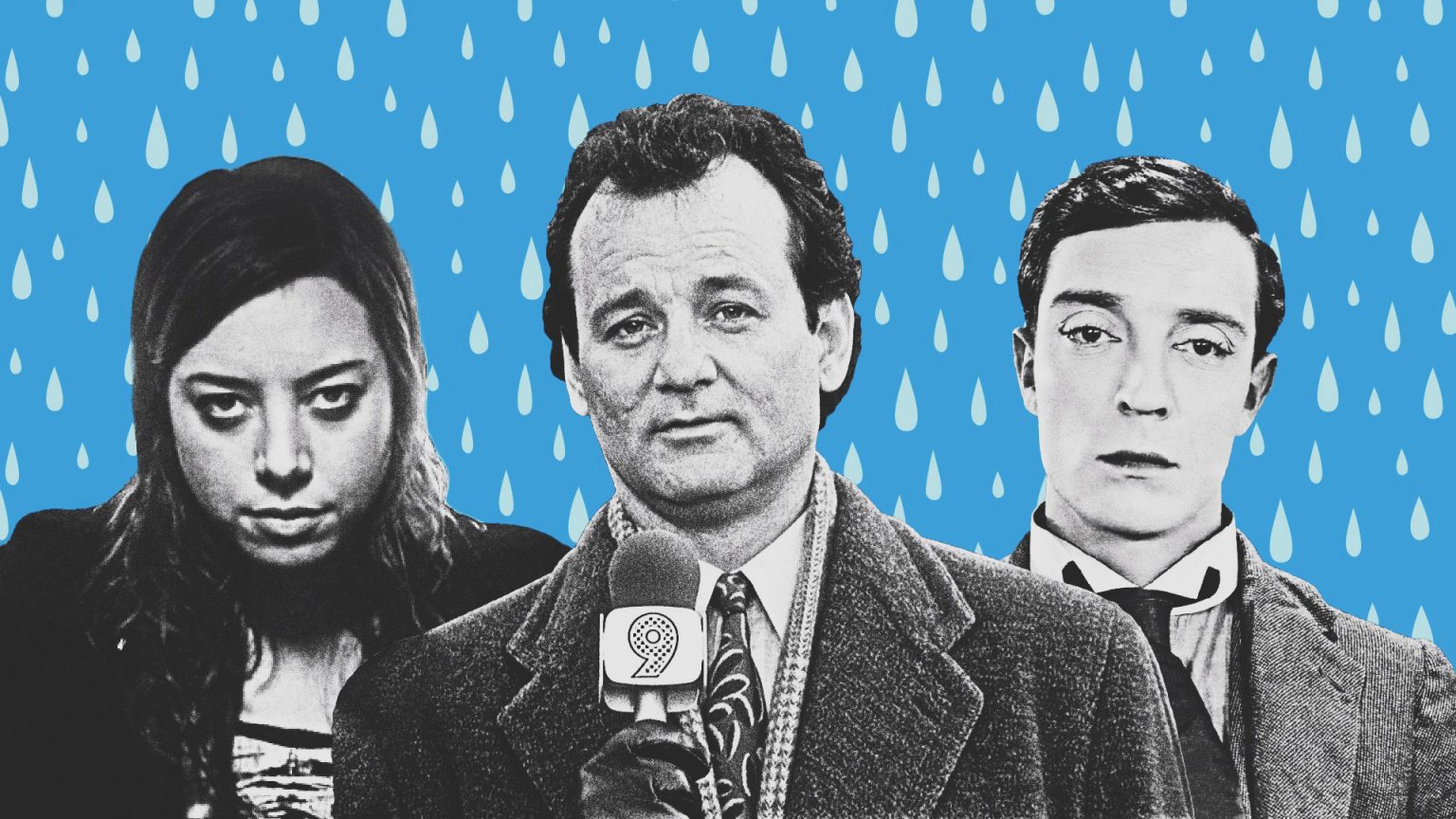Amidst the turbulence of the modern age, there is something attractive about the idea of emotionally shutting oneself off from the world. In terms of performance, a deadpan delivery perfectly reflects this desire. Actors such as Aubrey Plaza, Steve Carell, and Kristen Stewart champion this style of acting, and they’re not alone. Deadpan has a long history. It’s utilized across movie genres and around the world. More significantly though, deadpan can be interpreted as a form of defiance — the only way of dealing with the absurdity of modern times.
Of course, any conversation about deadpan must begin with Buster Keaton. Keaton started performing with his parents in vaudeville at a young age, and during these performances, he learned that he’d get more laughs if he kept a straight face. Like Charlie Chaplin, the films of Buster Keaton are primarily concerned with the stresses and burdens of the early 20th century and its new assembly line models and industrial technologies — in other words, modernity.
However, Keaton takes a different approach to this conflict than Chaplin. For Keaton, slapstick and deadpan function as coping mechanisms. The new world of anxiety-inducing factories, automobiles, and increasing urbanization is too much for Keaton’s characters; deadpan is Keaton’s way of exhibiting stoicism when faced with relentless societal pressures.
Since Keaton’s popularization of the method, social and technological anxieties have only intensified, and deadpan has become an increasingly attractive response. For example, in Keaton’s The General, the use of deadpan revolves around the anxiety brought on by train travel, while years later, in 1980’s Airplane!, the commercial airliner produces this same intense angst. In this sense, perhaps Leslie Nielsen’s hilariously neurotic phrasing of “I just want you to know we’re all counting on you” should be viewed as a legitimate cry for help — one which has been tragically deadened by the absurdity of his character, and which he can only convey through his stony delivery. In Groundhog Day, we find that the focus shifts away from technology onto the monotony and repetitiveness of modern daily life. Bill Murray is famous for his deadpan style, but only in Groundhog Day does the plot provide a clear motivation for it. Murray’s perpetually aggrieved face rejects the repetitive nature of his own situation.
It should also be noted that deadpan is in no way confined to Hollywood. In fact, outside the West, deadpan isn’t merely restricted to comedy. In Japan, comedian and director Takeshi Kitano utilizes deadpan to provide another level of alienation and grittiness to his gangster films. Kitano’s Hana-bi (released in the United States as Fireworks) is a masterfully composed film precisely because of Kitano’s cold composure. The film is about a gangster who rejects society so fervently that he renounces his own rejection of it. Instead, he retreats further and further away with his dying wife, and he only breaks his stoicism (albeit momentarily) for her.
One of the quintessential examples of deadpan is found in the films of the Palestinian actor-director Elia Suleiman, who intentionally draws on Keaton’s style of performance for explicitly political purposes. Suleiman uses deadpan to express the struggles of the Palestinian people through an acting style that seems so detached that it is more disturbing than funny. As a result, while Suleiman’s films possess some of the slapstick humor of Keaton, it is so excessive as to no longer be comedic.
There is no greater modern example of deadpan than Aubrey Plaza. Her complex deadpan performance in Matt Spicer’s 2017 film Ingrid Goes West is easily one of her best. In this film, the Instagram-obsessed Ingrid (Plaza) shadows the Internet-famous Taylor (Elizabeth Olsen) across California in hopes of sharing some of her attention and fame. In this film, we find that Plaza’s deadpan isn’t just a reaction to the excessive social media culture that surrounds her, but also a reaction against Olsen’s more bubbly persona. Plaza uses her fluid ability to switch between deadpan and fake friendliness to get what she wants — not only from Olsen but also from the men around her.
This points to precisely what is so radical about Plaza: She has rebelliously taken command of a style that has primarily been dominated by men. And no other actor has so adeptly mastered the detached, deceitful qualities of deadpan than Plaza. Her style stands opposed to the reactionary deadpan performances of Keaton, Nielsen, and Murray. It is far more action-oriented. Male actors are granted the privilege of a reactionary deadpan, whereas Plaza is sharply confrontational. This more decisive deadpan comes through wonderfully in her performances. Each numb glance is a challenge, and each slight twitch of her steady mouth is a threat. Plaza faces the history of deadpan as its matriarch, and all I can say is “long live the Queen.”
Watch Now: Don’t miss two of Buster Keaton’s films — The General and Cops — streaming here on Fandor. Plus, don’t miss the queen of deadpan herself, Aubrey Plaza, in Hal Hartley’s Ned Rifle.




